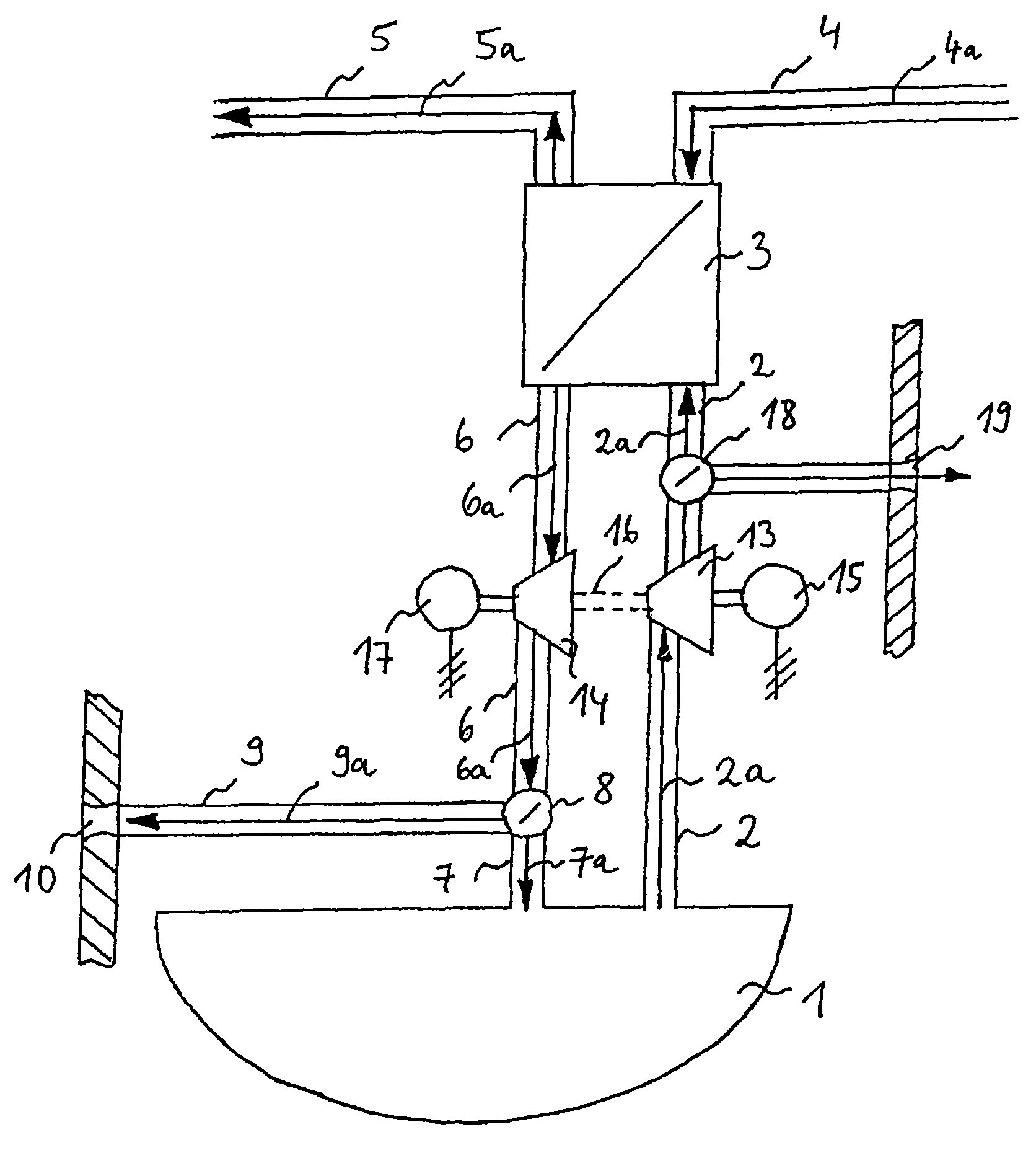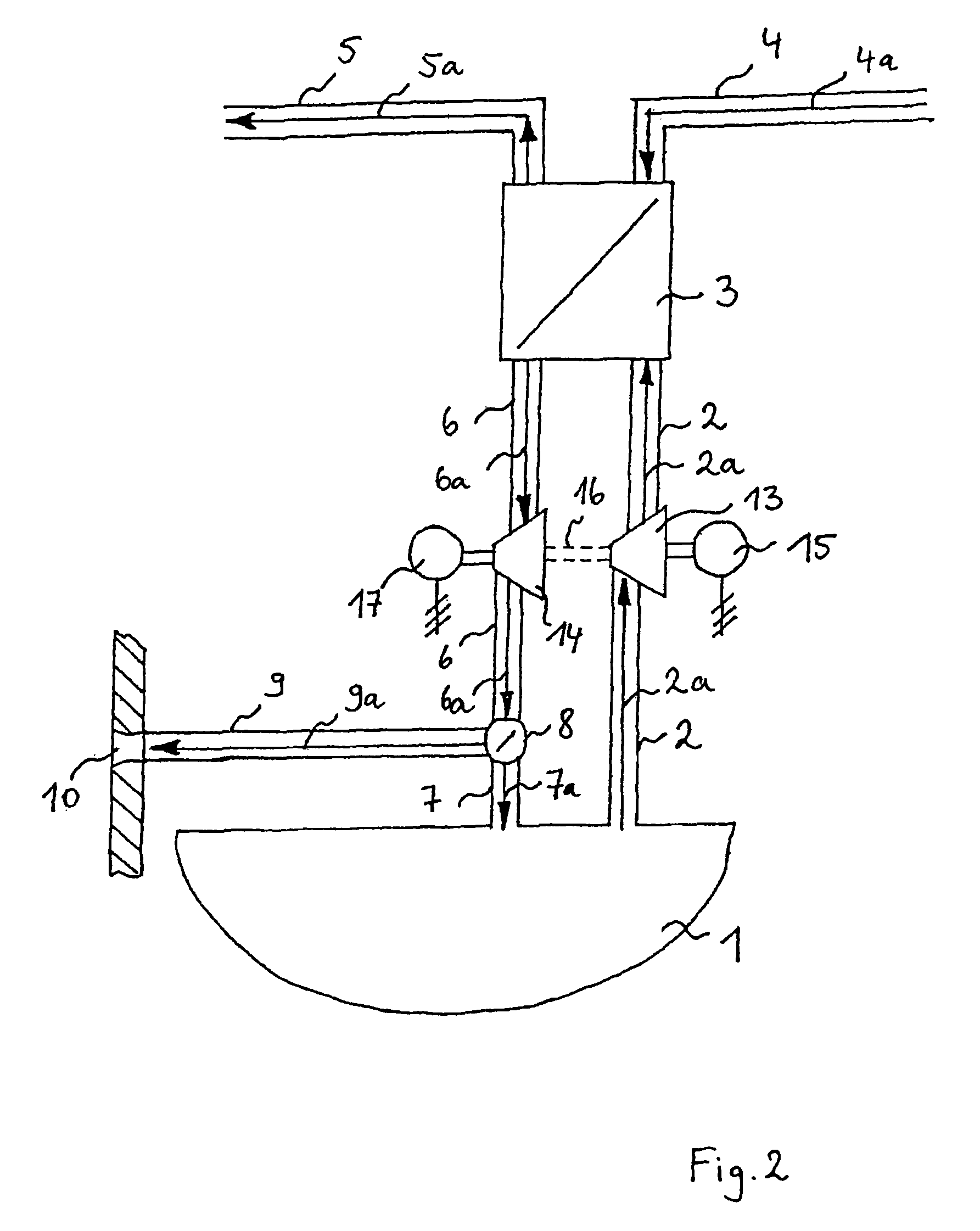Arrangement and method for utilizing the heat of waste air for heating the bilge area of aircraft
a technology of waste air and bilge area, which is applied in the direction of aircraft crew accommodation, energy-saving board measures, transportation and packaging, etc., can solve the problems of correspondingly higher expenditure for thermal insulation of areas, and only possible additional heating of bilge area with hot air flow
- Summary
- Abstract
- Description
- Claims
- Application Information
AI Technical Summary
Benefits of technology
Problems solved by technology
Method used
Image
Examples
Embodiment Construction
[0021]FIG. 1 shows a schematic representation of a first arrangement for utilizing the heat of waste air for heating the bilge area of aircraft. In FIG. 1, the bilge area is identified by the reference numeral 1 and connected to a heat transfer unit 3 via a first air supply pipe 2. A bilge air flow 2a is drawn in from the bilge area 1 and flows into the heat transfer unit 3 via the first air supply pipe 2. The drawn-in bilge air flow 2a is heated in the heat transfer unit 3 by a waste air heat flow 4a to be cooled. The waste air heat flow 4a to be cooled may consist, for example, of recirculated cabin air, lavatory waste air, galley waste air, waste air from the cooling of electric consumers or the hot air flow of the air-conditioning system of the aircraft. This means that any heat flow created in the aircraft can be effectively utilized for heating the drawn-in bilge air flow 2a. The heating of the drawn-in bilge air flow 2a in the heat transfer unit 3 is either realized directly ...
PUM
 Login to View More
Login to View More Abstract
Description
Claims
Application Information
 Login to View More
Login to View More - R&D
- Intellectual Property
- Life Sciences
- Materials
- Tech Scout
- Unparalleled Data Quality
- Higher Quality Content
- 60% Fewer Hallucinations
Browse by: Latest US Patents, China's latest patents, Technical Efficacy Thesaurus, Application Domain, Technology Topic, Popular Technical Reports.
© 2025 PatSnap. All rights reserved.Legal|Privacy policy|Modern Slavery Act Transparency Statement|Sitemap|About US| Contact US: help@patsnap.com



